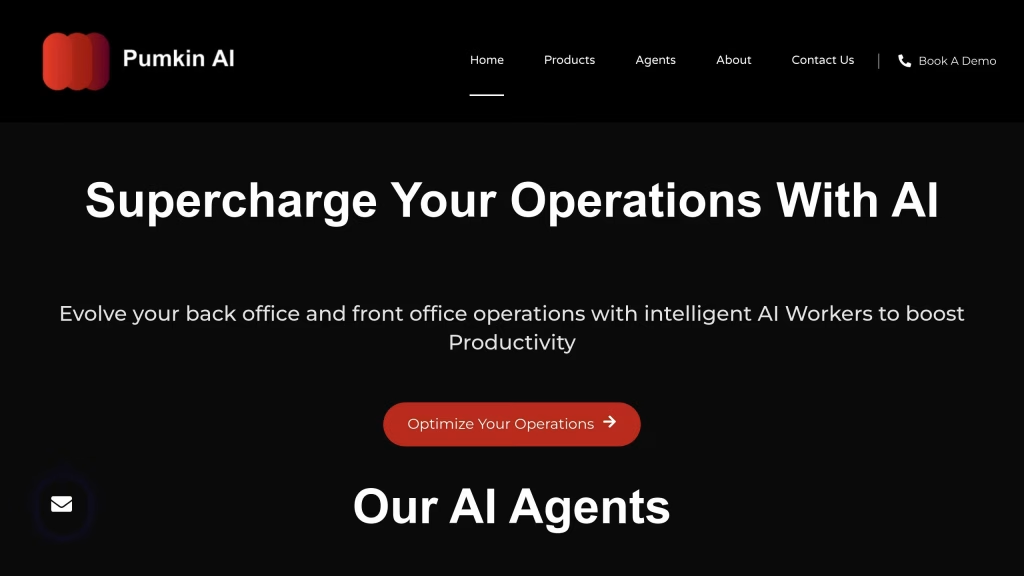
AI Agentic Systems can help businesses save time, reduce costs, and improve accuracy. Here’s a quick guide to get started:
- Evaluate Current Processes: Identify bottlenecks, repetitive tasks, and areas prone to errors in workflows. Focus on tasks like data entry, decision support, and pattern recognition for automation.
- Choose the Right AI Vendor: It’s an emerging field and look for vendors who offer integration with your existing software systems, scalability, and strong data protection features. Ensure compliance with regulations like GDPR and CCPA.
- Pilot and Monitor: Start with small, impactful projects. Define clear goals, track metrics like ROI and error rates, and gather user feedback.
- Train and Adapt: Train staff to use AI tools effectively, and regularly update systems to maintain performance and security.
Quick Overview of AI Benefits:
- Productivity Boost: AI Agentic Systems can increase productivity by up to 40%.
- Cost Savings: In industries like healthcare, AI could save $200–$360 billion annually.
- Faster Processes: Companies like Fidelity reduced contract processing time by 50% with AI.
Step 1: Review Your Current Processes
Before introducing AI Agentic Systems, take a close look at your current workflows to identify areas that need improvement.
Identify Issues and Delays in Processes
Create a detailed map of your workflows to uncover bottlenecks, unnecessary steps, and inefficiencies [1]. Pay attention to these critical areas:
| Process Element | What to Examine | Common Problems |
|---|---|---|
| Task Duration | Time spent on each step | Slow approval processes |
| Handoffs | Transfers between teams | Miscommunication or delays |
| Data Flow | Movement of information | Errors from manual data entry |
| Resource Usage | Allocation of staff/systems | Inefficient use of resources |
Choose Tasks for AI Automation
Once workflows are mapped, focus on automating tasks that are repetitive, take up too much time, or are prone to errors. Use these criteria to prioritize:
| Task Type | Automation Feasibility | Impact Timeline |
|---|---|---|
| Repetitive Data Entry | High | Immediate |
| Pattern Recognition | High | Short-term |
| Decision Support | Medium | Medium-term |
| Complex Analysis | High | Long-term |
Assess tasks based on their reliance on data, error rates, time requirements, consistency, and complexity in decision-making.
AI has the potential to contribute $10–15 trillion in value globally and can reduce process discovery time by up to 90% [3].
Step 2: What to Look for in AI Solutions
AI Vendor capability and Software Integration
Choose AI vendors who can deliver and integrate with your current systems. By 2025, 70% of enterprises are expected to operationalize AI [4], making integration a key factor for staying competitive.
| Integration Aspect | Key Considerations | Impact on Operations |
|---|---|---|
| API Compatibility | Pre-built data connectors with common business tools | Speeds up implementation |
| Scalability | Handles growing workloads effectively | Supports business expansion |
| Data Flow | Bi-directional data synchronization | Keeps updates in real-time |
| Custom Development | Offers extension capabilities | Allows tailored solutions |
Once integration is confirmed, ensure the solution adheres to strict data protection and legal standards.
Data Protection and Legal Requirements
The business process automation market is forecasted to hit $41.8 billion by 2033 [5], highlighting the need for strong security measures. Look for these features in your AI solutions:
| Security Feature | Purpose | Compliance Standard |
|---|---|---|
| Data Encryption | Safeguards sensitive information | GDPR, CCPA |
| Access Controls | Regulates user permissions | SOC 2 |
| Audit Trails | Monitors system activities | HIPAA |
| Data Residency | Ensures data storage aligns with local laws | Regional requirements |
Generative AI methods can cut privacy breach risks by 75% during data sharing [6]. To maintain security and efficiency, establish clear data governance policies to prevent unauthorized access.
“True AI compliance involves navigating an interconnected web of regulations – ranging from data protection to cybersecurity and competition law. For AI solutions to be legally sound, ethically grounded, and sustainable in the marketplace, organizations must develop and maintain a holistic compliance strategy that evolves alongside new technologies and legislative updates.” – Eckhart M. [7]
Cost Analysis and Return on Investment
Assess both the upfront costs – like licensing, custom development, setup, training, and maintenance – and the long-term benefits, such as improved efficiency, fewer errors, and scalability. These perks often lead to indirect benefits, including happier customers and more productive employees. With 89% of AI decision-makers advancing generative AI, the potential for strong ROI is clear [4].
Step 3: AI Automation Tools Overview
Pumkin AI: AI Agents Automation Platform

Pumkin AI streamlines workflows by using intelligent agents tailored to optimize business processes. The platform promises custom AI solutions delivered within just two weeks, showcasing success across multiple industries.
Key features include:
-
- AI-powered workflow automation
-
- Advanced knowledge management and intelligent search
-
- Business intelligence insights
-
- Enterprise software integration
-
- Security and performance monitoring
The Agent Portal simplifies AI usage, tracks costs, and ensures security, while the Data Connector integrates effortlessly with existing systems for a smoother transition.
Business Success Stories with AI
Recent applications of AI have delivered impressive returns across industries. For example, companies leveraging Microsoft AI solutions report earning $3.70 for every $1 invested [9].
-
- Healthcare Sector: Acentra Health created MedScribe using Azure OpenAI Service, which led to:
-
- Saving 11,000 nursing hours
-
- Cutting costs by nearly $800,000
-
- Achieving a 99% approval rate for AI-generated letters [9]
-
- Healthcare Sector: Acentra Health created MedScribe using Azure OpenAI Service, which led to:
-
- Renewable Energy: A renewable energy firm adopted AI-driven predictive maintenance for wind turbines, leading to:
-
- Less equipment downtime
-
- Lower operational costs
-
- Improved energy generation efficiency [8]
-
- Renewable Energy: A renewable energy firm adopted AI-driven predictive maintenance for wind turbines, leading to:
Step 4: Set Up and Monitor AI Systems
AI Setup Guidelines
Start by defining clear objectives and the scope for your AI implementation.
“Artificial intelligence encompasses many things, and there’s a lot of hyperbole and, in some cases, exaggeration about how intelligent it really is” [10]
Set achievable goals by focusing on measurable, incremental progress rather than overpromising.
Here’s a checklist to help you integrate AI into your workflows:
-
- Prepare and assess the quality of your data.
-
- Plan how AI will integrate with your existing systems.
-
- Train your staff to use and manage the AI tools effectively.
-
- Ensure security measures and regulatory compliance are in place.
-
- Test and validate the system before full deployment.
“Ensure you keep the humans in the loop to build trust and engage your business and process experts with your data scientists” [10]
Once you have a roadmap, monitor outcomes and adjust as needed to improve your approach.
Measure Performance Results
Track metrics that show how AI is impacting your business. Focus on areas like:
| Metric Category | What to Measure | Why It Matters |
|---|---|---|
| Operational Efficiency | Processing time, error rates, automation rates | Evaluates improvements in business processes |
| Cost Effectiveness | ROI, resource utilization, cost per transaction | Assesses financial gains |
| System Performance | Response time, uptime, accuracy rates | Confirms technical reliability |
| User Adoption | Usage rates, user feedback, training completion | Measures how well AI is integrated |
“AI capability can only mature as fast as your overall data management maturity, so create and execute a roadmap to move these capabilities in parallel” [10]
Update and Improve AI Systems
After tracking performance, regular updates are key to keeping your AI systems effective. Interestingly, 48% of organizations say a lack of skilled staff is their biggest hurdle to adopting AI [11].
Make it a habit to review:
-
- System performance and optimization.
-
- Data quality to ensure accurate results.
-
- Feedback from users to identify areas for improvement.
-
- Updates to keep the system current.
“We’re seeing that the early adopters who overcame barriers to deploy AI are making further investments, proving to me that they are already experiencing the benefits from AI” [11]
To maintain long-term success, focus on:
-
- Retraining models regularly to improve accuracy.
-
- Optimizing performance for better results.
-
- Applying security updates to protect your system.
-
- Monitoring compliance with industry regulations.
Invest in change management and ongoing training for your team to ensure your AI implementation continues to deliver results.
Conclusion: Next Steps for AI Implementation
Key Takeaways
Implementing AI successfully requires thoughtful planning. While 72% of organizations already use AI in some capacity [12], only 22% see meaningful results [13]. This highlights the importance of a structured approach.
| Phase | Actions to Take | What to Expect |
|---|---|---|
| Initial Planning | Set clear goals, evaluate data quality, pinpoint integration points | Well-defined objectives and readiness |
| Pilot Launch | Focus on impactful, low-risk projects; define measurable metrics | Early successes and validated strategies |
| Scaling Up | Broaden successful pilots, monitor performance, adapt based on feedback | Sustainable growth and measurable ROI |
These steps create a foundation for success. When done right, AI can drive revenue growth and improve shareholder returns [13].
Mark Cuban captures the urgency of understanding AI’s role in business:
“There are only two types of companies in this world, those who are great at AI and everybody else. If you don’t know AI, you are going to fail, period, end of story. You have to understand it, because it will have a significant impact on every single thing that you do. There’s no avoiding it.” – Mark Cuban [13]
Practical Strategies for Success
-
- Start Small: Begin with pilot projects that balance value and risk.
-
- Prioritize Data Quality: Perform thorough checks and validations.
-
- Track Metrics: Measure results tied to business goals, like cost savings or efficiency gains.
-
- Empower Teams: Offer training to build expertise and reduce resistance.
-
- Stay Flexible: Use performance data and feedback to refine your approach.
These strategies align with earlier discussions on optimizing processes and ensuring AI is integrated effectively.
AI is not a one-time project; it’s an ongoing process. With large language models potentially affecting 40% of all working hours [12], businesses must commit to continuous monitoring, updates, and ethical practices to sustain long-term impact.

